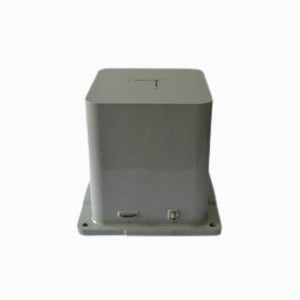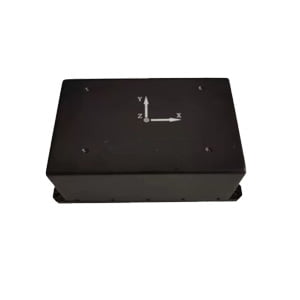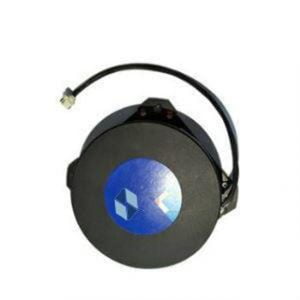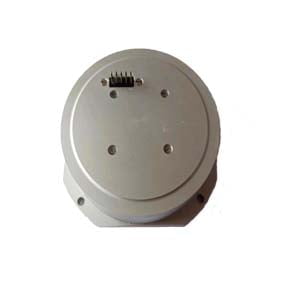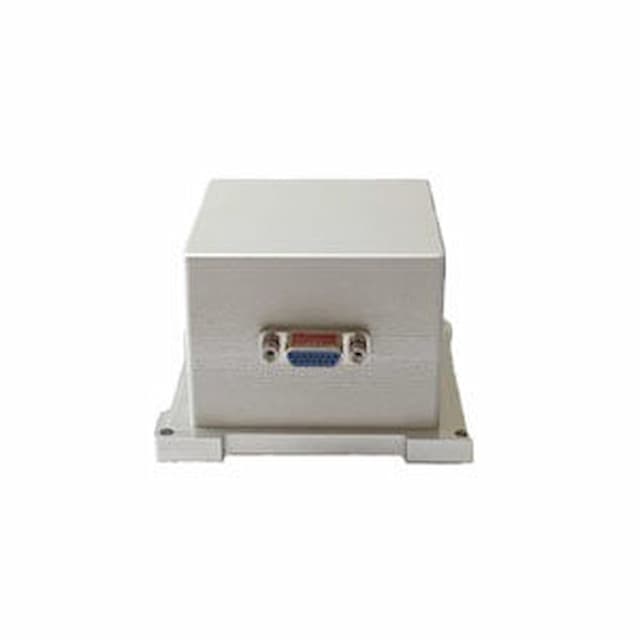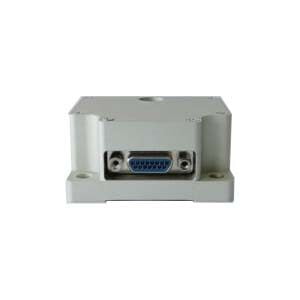The data processing requirements of FOG north seeker are different from the data processing methods used in the navigation field. It does not have too stringent requirements for real-time performance. It can even completely separate data acquisition and data processing, and pays more attention to stability and accuracy. In order to improve the north-seeking accuracy of the fiber optic gyro north seeker, this article believes that it can be improved through three aspects:
(1) First, improve the north-seeking accuracy of FOG north seeker by improving the performance of the gyroscope components
(2) The second step is to improve the north-seeking scheme to improve the north-seeking accuracy of the north-seeking instrument
(3) The last step is to mine the patterns behind the data and improve the north-finding accuracy through data processing
In an ideal state, the output value of fiber optic gyroscope can truly reflect the angular rate of the current system where the gyroscope is located. However, during the actual test process, due to the noise generated by the internal components of the gyroscope and the continuous impact of the external working environment on the gyroscope output value, interference noise and drift will inevitably exist in the gyroscope output value. The existence of these noises greatly interferes with the north-seeking measurement accuracy of fiber optic gyroscopes. Therefore, when FOG north seeker performs north seeking directional measurement, we can conduct in-depth analysis and research on the internal hidden rules of the output signal of the fiber optic gyroscope, so that we can take effective error suppression measures and compensation methods to improve the accuracy of its directional measurement.
Data preprocessing
Since the fiber optic north seeker contains a lot of noise during the north seeking process, these noises are external and internal, such as external vibration and temperature changes, which will have a huge impact on the data. Let these data participate in the data calculation, which will greatly affect the accuracy of north seeking. Therefore, a gross error detection method is needed to eliminate these gross error data. Below, several gross error elimination methods commonly used in the field of surveying and mapping are used to identify and process gross errors in fiber optic gyroscope data.
Medium error method
The basic principle of the median error method is to classify the output value X of the fiber optic gyroscope using the median error method. The approximate threshold value is determined as the gross error and removed, and the value less than the threshold is retained to participate in the following calculation. Specific steps are as follows: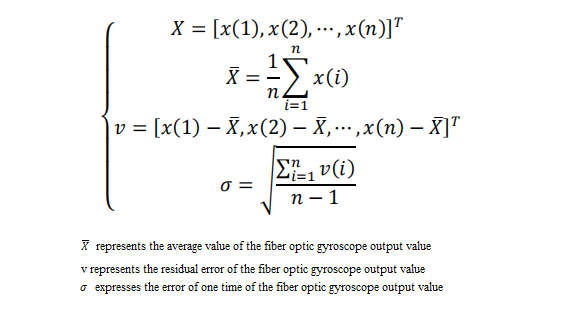 For the fiber optic gyroscope output value collected at a certain time, if a certain residual data is greater than 2?, the observation value The residual values for all data are less than 2?.
For the fiber optic gyroscope output value collected at a certain time, if a certain residual data is greater than 2?, the observation value The residual values for all data are less than 2?.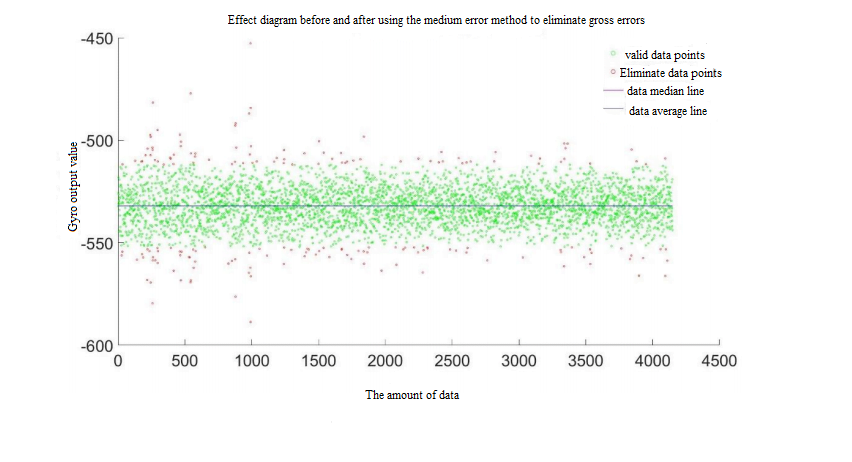 Interquartile range method
Interquartile range method
The interquartile range method is used to identify and propose gross errors in the data collected by the fiber optic gyroscope. The specific calculation process is as follows: arrange the observation data of the fiber optic gyroscope in an increasing manner, calculate the interquartile range of the data, and calculate the interquartile range of the data. The value corresponding to the top 25% is called the lower quartile Q1, the value corresponding to the top 50% is called the median Q2, the value corresponding to the top 75% is called the median Q3, and the difference between Q3 and Q1 is defined as Interquartile range IQR, the specific calculation method is as follows:
(1) The position of Q3 is n*0.75, and n represents the total amount of data;
(2) The position of Q1 is n*0.25, and n represents the total amount of data;
(3) Interquartile range R, R=Q3-Q1;
(4) Calculate parameters a and b, a=Q1-1.5 *R, b=Q3+1.5 *R;
(5) The value of the fiber optic gyroscope's measurement data outside the interval [a, b] is defined as a gross error.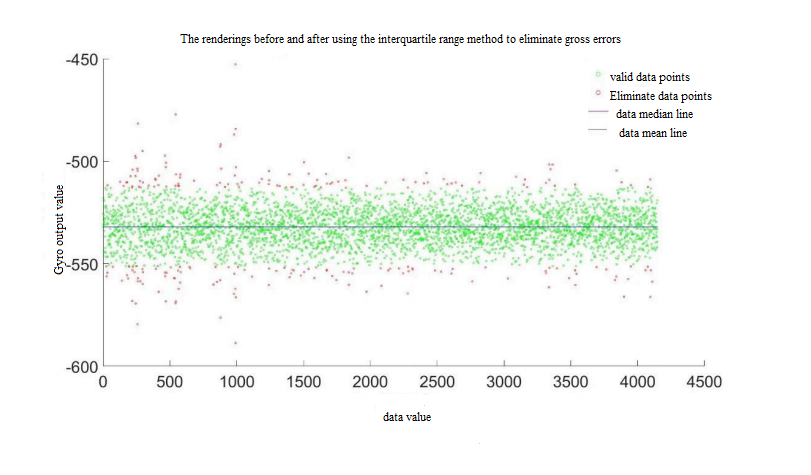 Summary
Summary
This article introduces some data processing methods commonly used in the field of surveying and mapping into fiber optic gyroscope data processing, such as: The medium error method and the interquartile range method are used in data processing of fiber optic gyroscopes to continuously improve the accuracy, thereby affecting the north-finding accuracy. Ericco company continues to pursue high-quality development. At present, High Performance Dynamic FOG North Seeker (ER-FOG-01) is the product with the highest accuracy among our company's north seeker products. Low Cost 3 Axis FOG North Seeker(ER-FOG-03) is deeply loved by domestic and foreign customers due to its cost advantage.If you are interested, you can check their details.
More Technical Questions
1.Research on Anti-environmental Interference of North Finder
2.Analysis and Calibration of North Seeker Transposition Error
3.Analyze the Software Design of North Finder
4.Technical Analysis of FOG North Finder in Improving Accuracy
5.Research on Signal Acquisition of Strap-down North Seeker
6.Error Analysis and Compensation Technology of North Seeker
Products in Article
